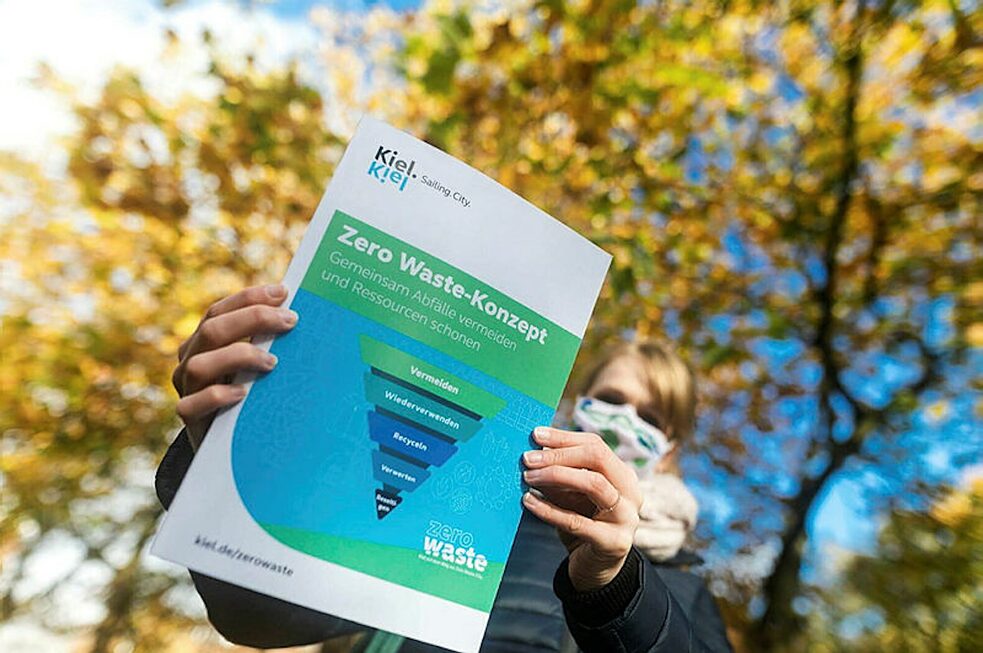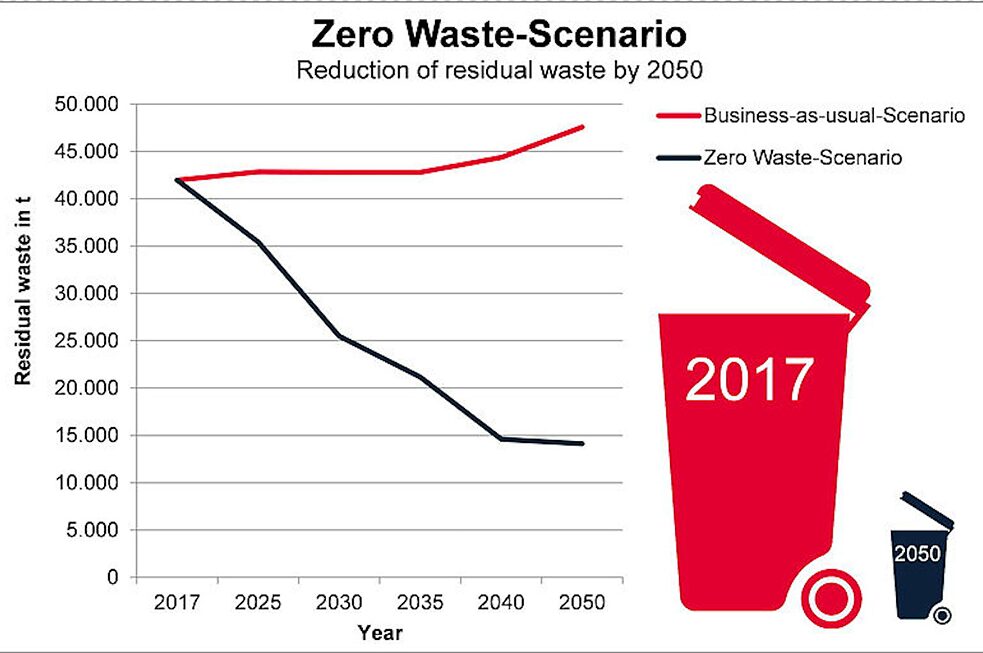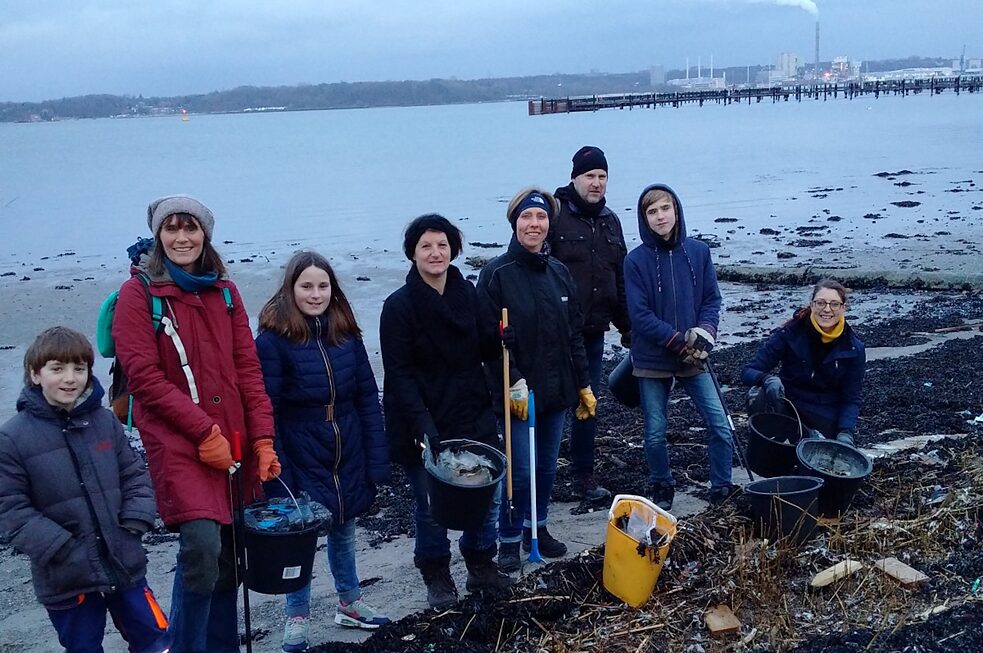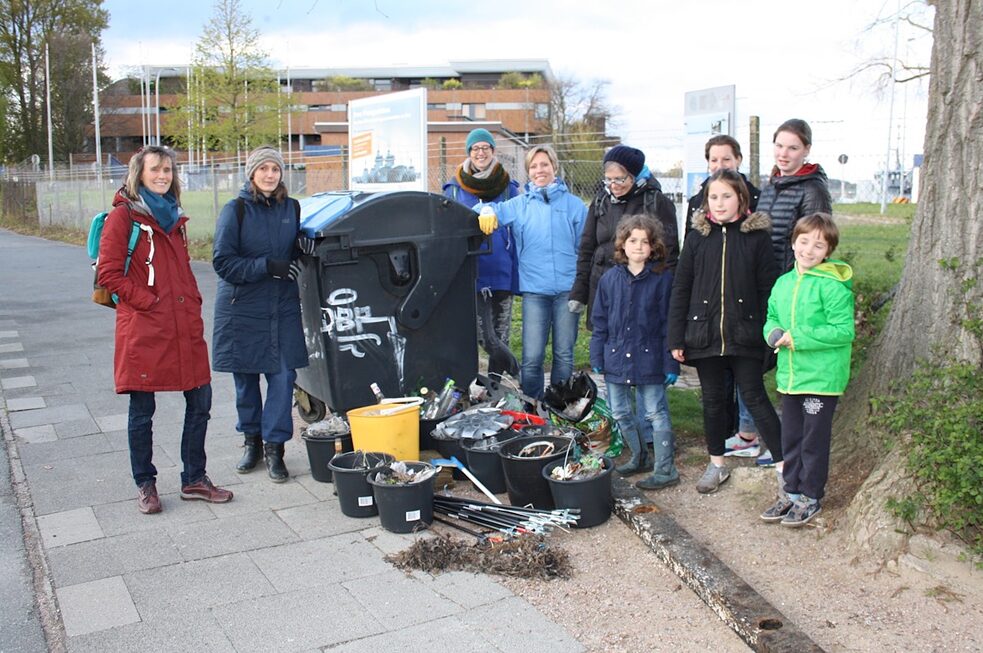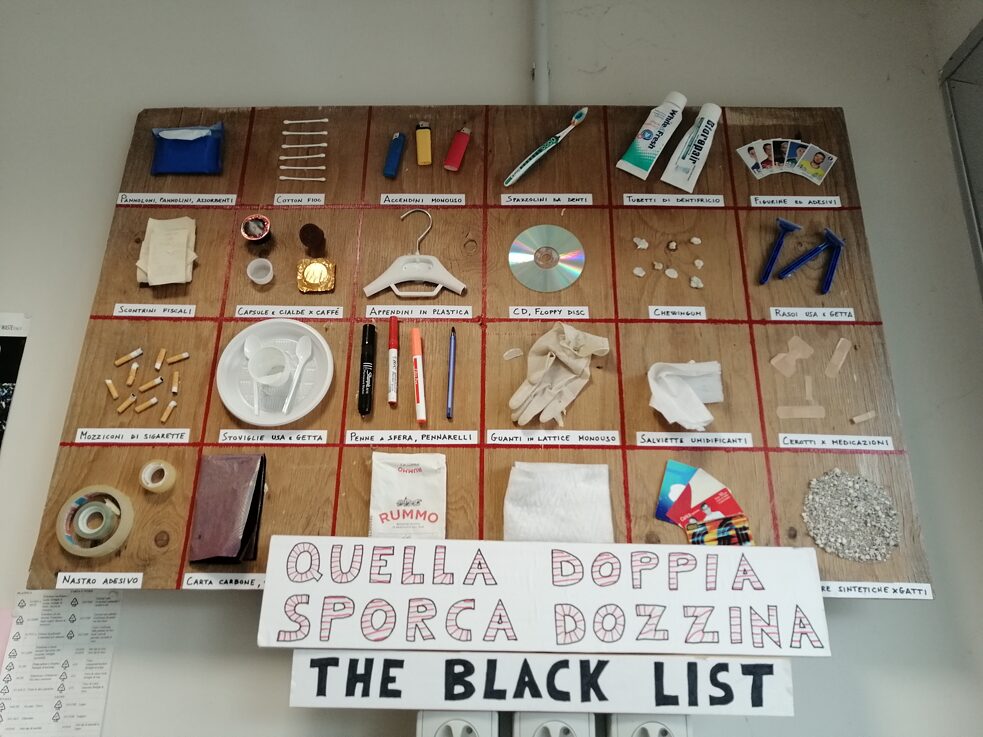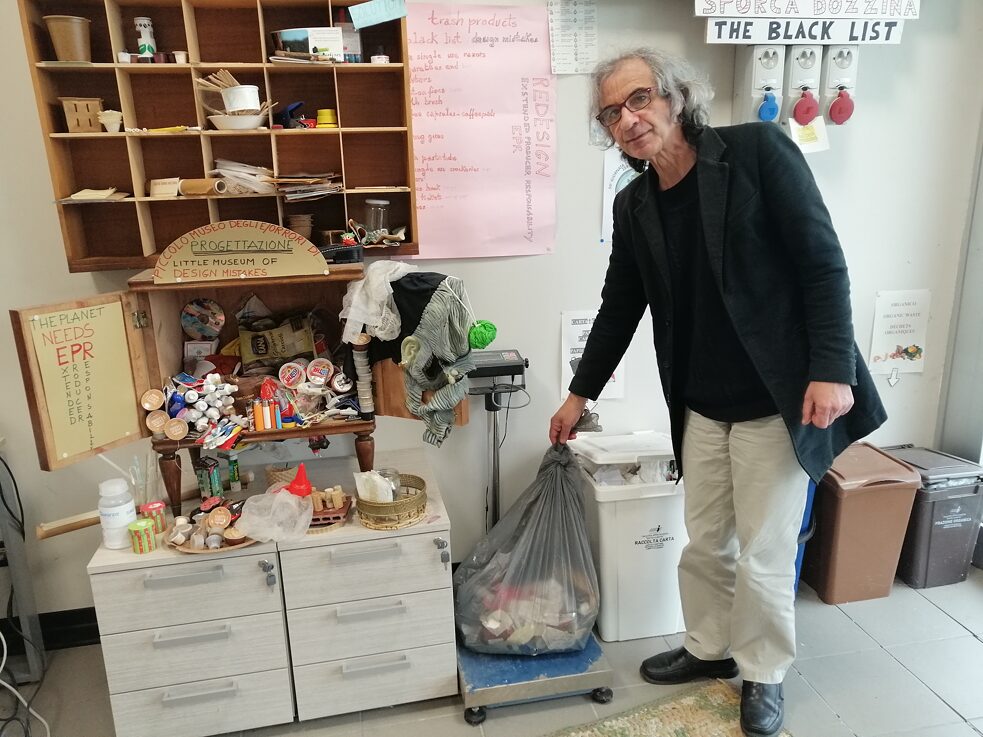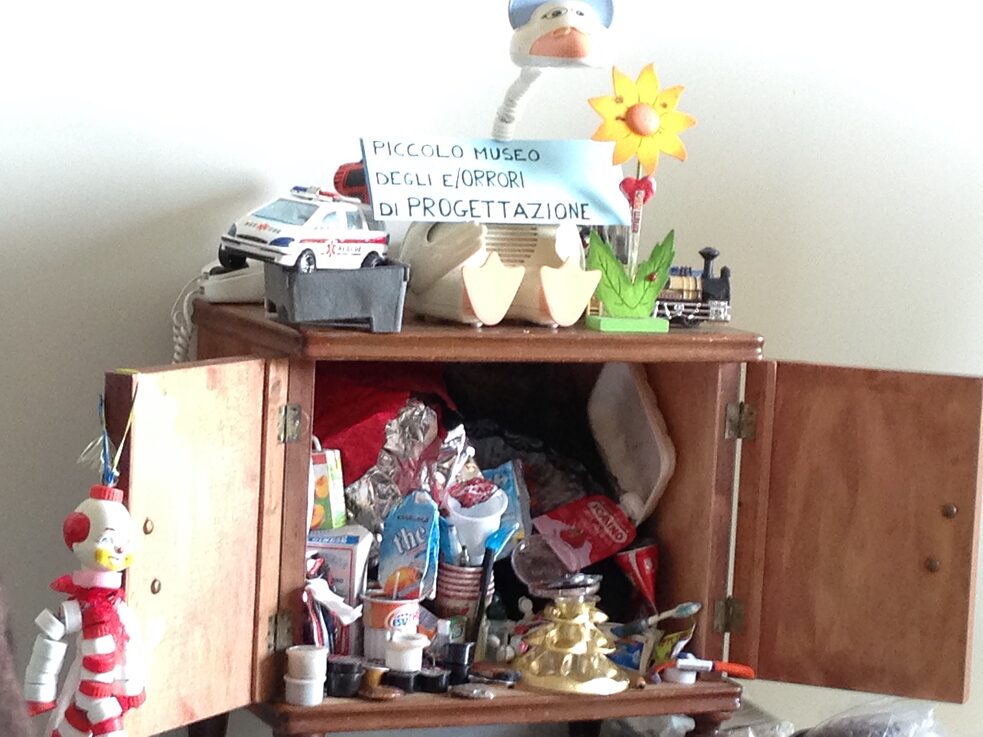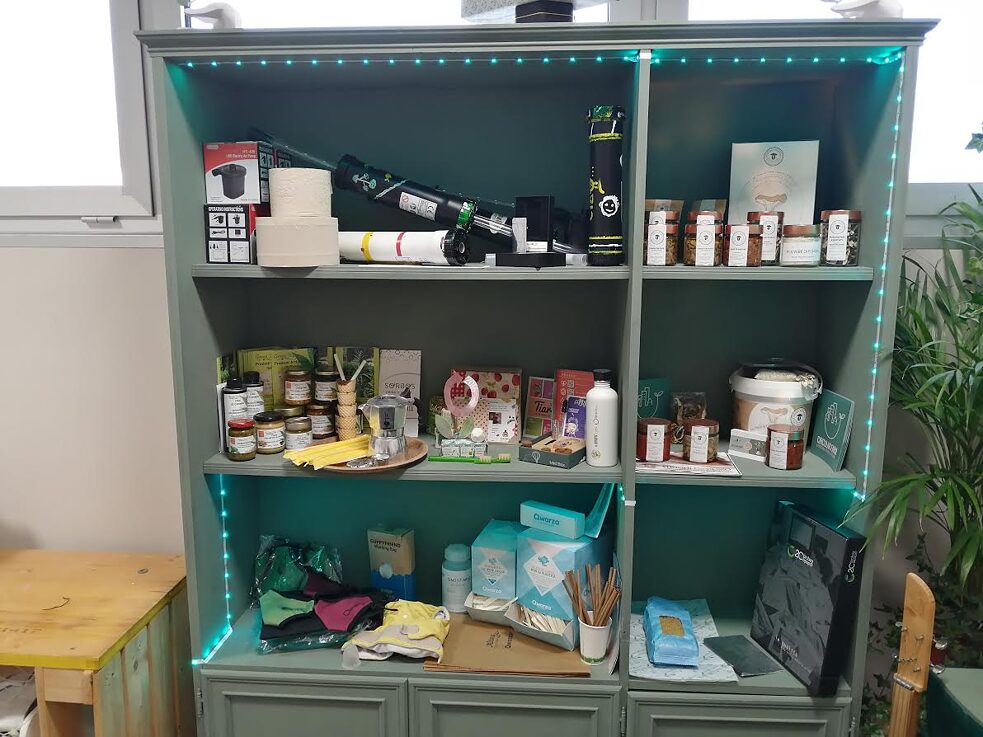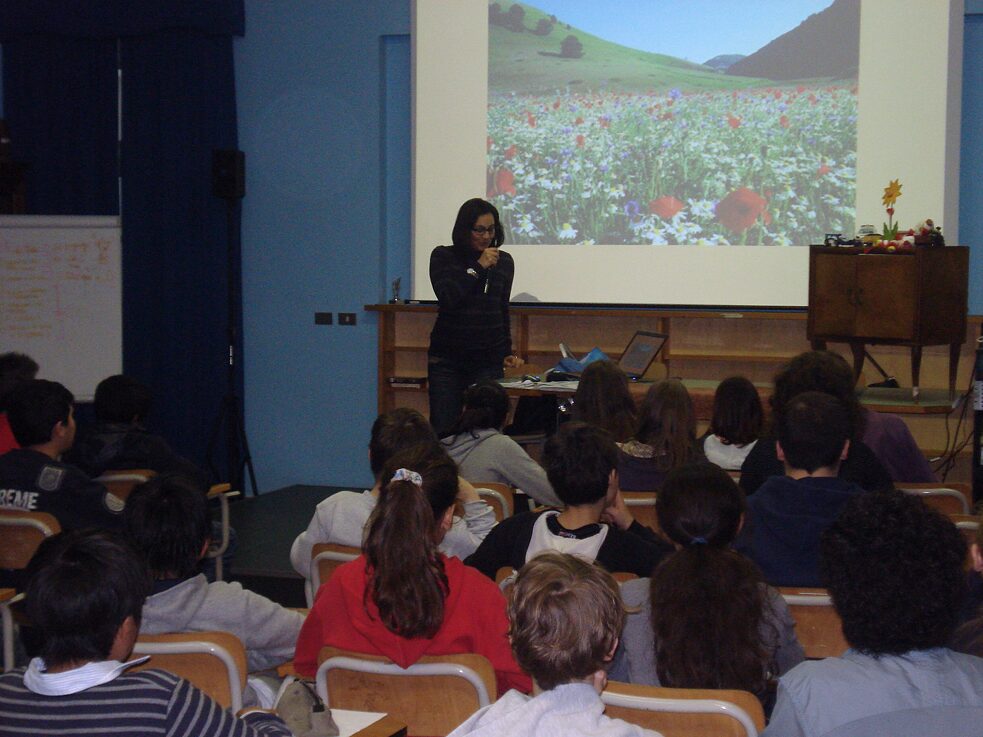Zero Waste
The Solution to the Masses of Waste?
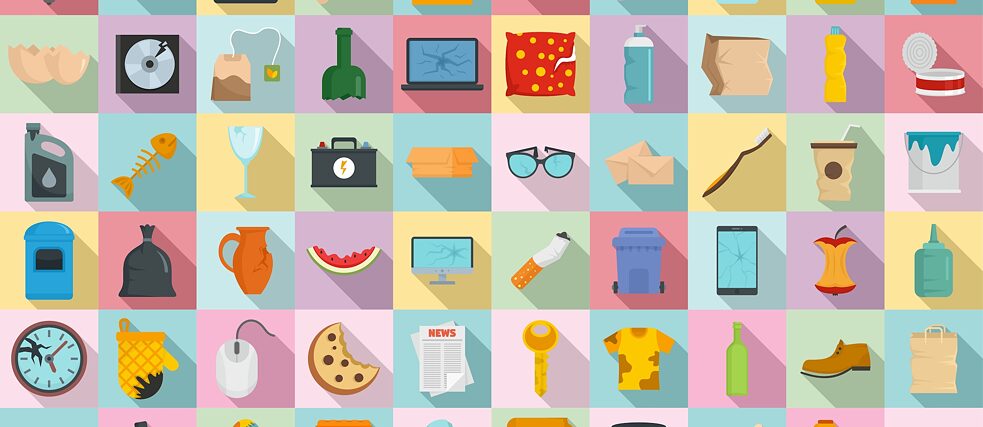
Generating 609 kilograms of waste per capita each year, Germany is the world’s fifth-largest waste producer. Italy, in eleventh place, weighs in just short of the European average at around 499 kilograms. Many Italian towns have signed up to the Zero Waste movement – the first in Europe to do so – with Capannori leading the way. Kiel is the first German city to have also set itself the target of zero waste. How can the transition best be achieved collectively? An exchange between zero waste pioneers Rossano Ercolini and Marie Delaperrière from Capannori and Kiel.
The Towns
KIEL
The capital of Schleswig-Holstein (with a population of 249,000), Kiel has just won the German Sustainability Award. This climate protection city on the Baltic Sea wants to be carbon-neutral by 2050 – its Zero Waste concept was adopted in 2019 and is soon to be implemented. The total amount of waste generated per capita and per year is to be reduced by 15% by 2035, while domestic and commercial waste is to be slashed by 50%. 107 different measures are planned, including a local packaging tax, zero waste schools, public drinking water fountains and a construction materials exchange.
Website Kiel | Zero Waste
CAPANNORI
This town near Lucca in Tuscany (with a population of 46,700) is regarded as a pioneer of the Zero Waste movement in Italy and Europe. It has been steadily reducing its waste since 2007. Refuse is collected directly from people’s front doors, a pay-as-you-throw tax was introduced, and information and education events are staged for all residents. Europe’s first Zero Waste Research Centre was also established. As a result, the amount of waste has plummeted by 40% in the space of ten years, from just under 2 kilograms per person per day to just under 1.2 kilograms. Residual waste has been reduced by 57%. At 82%, the proportion of waste that is separated exceeds the European and Italian average. Taxes that residents pay on their waste have decreased by 20%.
Website Capannori | Zero Waste
Rossano Ercolini: First of all, I want to say that we can teach and learn at the same time if we work together. Our story is one of empowerment and of growing awareness. This requires a certain degree of stamina to ensure that one never abandons one’s own common sense, and does not allow oneself to be intimidated by people who call themselves experts. We should never feel that we are alone, as the Zero Waste movement is active all over the world. We have also learnt that it is extremely important not only to say “no”, but also to highlight alternatives.
Ms Delaperrière, how did you get Kiel to pursue the Zero Waste goal?
Marie Delaperrière: The Zero Waste approach was an obvious choice. Kiel is situated on the coast, so the people of Kiel are sensitive to the issue of plastics in the sea. We are also a climate protection city and twinned with San Francisco, which is also a Zero Waste city. Thanks to Capannori and other towns, we had many great examples to follow. In Kiel we found ourselves preaching to the converted and were impressed by how many citizens got involved: after the concept was first presented in 2018, it was less than a year later that the kick-off event – the European Week for Waste Reduction – was held. The first measures are currently being prepared. Kiel is ready to go!
Capannori was Europe’s first Zero Waste town. How did you achieve the transition?
R.E.: In the 1990s, the region of Tuscany wanted to build two waste incineration plants in our province. We wanted to prevent this, but we did not have any support from the population. We organized a huge gathering of 1,000 people, but we had no scientific support and the environmental organizations did not want to help us, either. At the same time, the Zero Waste movement was evolving around the world and received help from the office of the ecologist Barry Commoner, who had succeeded in preventing two waste incineration plants from being built in New York. The professor and activist Paul Connett was recommended to us. He came to visit, and when he talked at this huge gathering in our province we realized that we would win.
There are meanwhile 315 Zero Waste towns in Italy, and the movement is expanding in Europe…
R.E.: When you are successful, everyone watches what you are doing. The Zero Waste communities in Italy now represent around 7 million people, and everyone wants to talk about waste avoidance. We are no longer pioneers, but are in a position to offer individual solutions immediately that can be put into practice right away, like from a toolkit. It is very important that Germany has now joined in, as it has a lot of pull in Europe.
In Germany, people argue in favour of waste incineration as a way of producing energy.
R.E.: Unfortunately, Germany is the European centre of waste incineration. However, this is a dirty industry because it needs disposable products and waste. If there is not enough waste in Kiel, then it will simply be imported. England for example has exported 20 million tons of waste to German incineration facilities in the past years. I don’t want to shock you, Marie, but I know that Kiel also has such a facility. The city will have to work out an exit strategy. From an ethical and ecological perspective, we cannot afford to incinerate waste. Landfill sites do not make sense either, simply in terms of safety, and most importantly of all no materials should be dumped there before being decontaminated.
M.D.: Yes. Germany’s “waste-to-energy” policy promotes neither waste reduction nor a circular economy. Incinerating waste does not constitute an efficient source of energy, however. We want to show that different approaches are possible, and to avoid so much waste that these plants become redundant! The instruments that this requires are already enshrined in the Waste Management Act, which for example gives clear preference to waste avoidance, reuse and recycling over incineration. It will take time to phase out incineration, however. Kiel has included this issue in its strategy, which I find very brave!
We call it the Zero-Waste Law: more citizen participation means less pollution. Less participation, more pollution.
Rossano Ercolini
Is it really possible to achieve “zero” waste?
M.D.: On an individual level, it is mainly about pursuing a vision. We will find ourselves reaching certain limits simply because society and manufacturers have not come far enough yet. “Zero waste” will only be achieved once everyone has changed their attitudes to consumption and to waste, and once alternatives are also promoted by policymakers and business. Until then, zero waste is a vision, a hope. But I am optimistic that it is doable.
R.E.: Exactly. We produce waste with our own two hands when we mix organic with residual waste. If we keep organic waste separate from polymers, metal, glass, paper, wood and fabrics, we will obtain valuable raw materials. Separating waste in this way means that only 10-15% of the total remains that cannot be recycled or composted. Our Zero Waste Research Centre in Capannori is studying what is left over – the part that cannot be “digested” by our waste management system. We have identified 24 products, including disposable lighters, nappies and till receipts. 85 families in Capannori have now signed up to the “Waste-free Family” initiative. They receive discounts for having their residual waste weighed. On average, these families generate 3.9 kilograms of residual waste per capita and per year. The figure for other residents is 80 kilograms, which is not bad by Italian standards. But it does reveal just how much can still be done.
In Europe, Germany is regarded as a pioneer of recycling and waste separation. However, Italy has overtaken Germany in terms of recycling since the early 2000s, and is producing much less waste. How do you view the way waste is dealt with in your countries?
M.D.: Unfortunately, Germany is one of the world’s champion waste producers! However, Germans do not realize that we have a well-organized waste management system. We produce a lot of waste that quickly disappears from view. Separating waste and the promise of recycling ease our consciences! These days it is common knowledge that only a small part is actually recycled. The lion’s share is exported as “reusable materials” and often ends up polluting the destination countries.
R.E.: Many mayors in Italy are very open-minded and approachable. Regional governments and the national government show little sensitivity to this issue, on the other hand. Over the course of the years, we have understood what we call the zero waste law: more civic engagement means less environmental pollution, while less engagement means more pollution. In other words, waste avoidance is directly linked to democracy. These days Italy is the OECD member that recycles the most.
I take a critical view of the deposit on aluminium cans. However, the lifecycle of the cans – from production to recycling – is not particularly eco-friendly.
Marie Delaperrière
It was long the case that the prosperity of a society was measured by the growing volume of waste it generated. Does waste have anything to do with prosperity?
M.D.: I’m certain it does! Though I also see this as being related to the acceleration of our society. We urgently need to take the time to consider where our consumption is leading. For a trend reversal to take place, society as a whole must be aware of the problem and embrace alternatives. I feel optimistic when I see the growing interest in a zero waste lifestyle and ecological movements such as Fridays for Future, however.
R.E.: The EU made it quite clear some time ago how vital it is for economic growth to be viewed separately from waste growth. What is more, Europe has a lack of raw materials, such as rare earths. Consequently, we must extract them from our electronic waste, even more for reasons of international competitiveness than for sustainability and environmental protection. This might mean that we can combine business and environmental protection for the first time in history – think for example of Cradle to Cradle…
This circular economy concept involves using biodegradable or reusable materials, also in the construction industry.
R.E.: Another aspect: Capannori is the centre of Europe’s leading paper industry. The economy in our region survived the crisis thanks to recycling! What is more, Lucca and Capannori have created 170 jobs in transport, recycling and planning, which means that zero waste is boosting the local economy, which also invests locally, thereby triggering an ecological revolution that does not mean returning to the Stone Age but in which there needs to be a balance between having and being. Germany’s can deposit system has been discussed as a possible role model for Italy in recent years, but Germany has discovered from studies that the deposit has reduced the use not of disposable plastics but of reusable glass bottles instead.
M.D.: I take a critical view of the deposit on aluminium cans. According to the German Waste Management Act, reusable products should be given priority over recycling. However, the lifecycle of the cans – from production to recycling – is not particularly eco-friendly, and they are also not 100% recyclable. When choosing materials, we must also take their lifecycle into account – and do more to promote reusable products again.
R.E.: Aluminium is even more damaging to the environment than plastic! The reusable system in Italy was abandoned in the late 1980s, and it could be some time before it is reinstated. Disposable products are the real problem. We must extend the lifespans of the things we use. Instead of Black Fridays – days that generate increased electronic scrap – we want Green Fridays that involve people reflecting on what they buy.
Many report that zero waste is exhausting at first. You have to ask a lot of questions and go to more different shops to buy what you need.
M.D.: The most important rule is not to get stressed, but to view it as a bit of fun. I am a fan of farmers’ markets and began taking my own shopping bag and paper bags with me. You can look in the fridge and think about what alternative packaging or products are available. The next step is to work out where best to find them. It is a journey, and always a quest for new experiences, for “more less”. Every alternative is a minor victory. It’s a process I would recommend to anyone.
R.E.: Today a girl brought me a juice in a carton together with a straw that used to be made of plastic, but is now cardboard. It would be better to drink from a reusable bottle. But if in the meantime we find compostable and recyclable materials as an alternative, this is also part of the transition process. There are issues for which we have ready-made solutions, and others where we are still feeling our way. We need to change our policies and our economy – and then also our lifestyle. It is energizing to discover new things and get to know new people and ways of living. That is an effort that can be truly satisfying. Zero waste is a positive narrative: it is doable!
